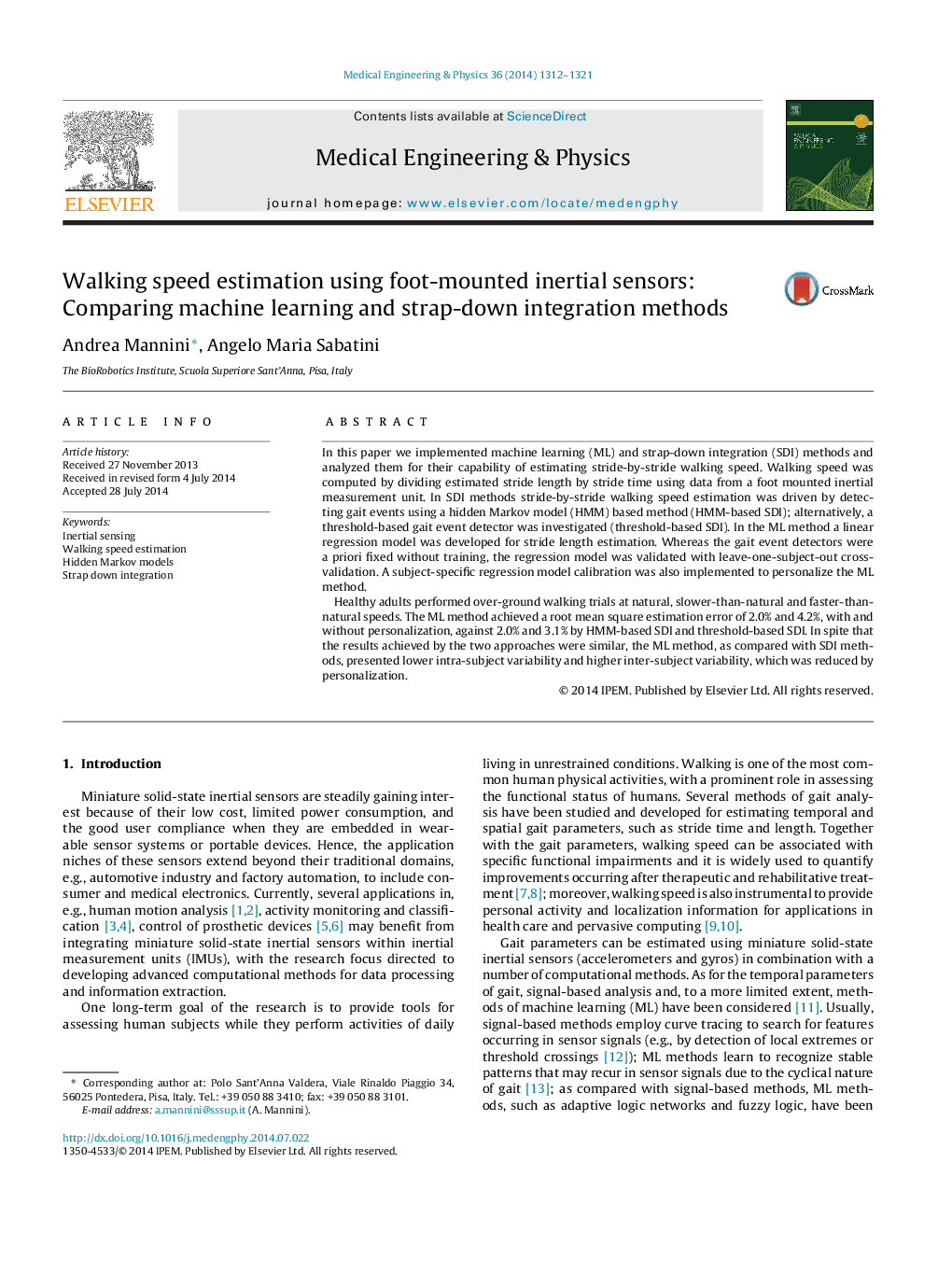| Article ID | Journal | Published Year | Pages | File Type |
|---|---|---|---|---|
| 875816 | Medical Engineering & Physics | 2014 | 10 Pages |
In this paper we implemented machine learning (ML) and strap-down integration (SDI) methods and analyzed them for their capability of estimating stride-by-stride walking speed. Walking speed was computed by dividing estimated stride length by stride time using data from a foot mounted inertial measurement unit. In SDI methods stride-by-stride walking speed estimation was driven by detecting gait events using a hidden Markov model (HMM) based method (HMM-based SDI); alternatively, a threshold-based gait event detector was investigated (threshold-based SDI). In the ML method a linear regression model was developed for stride length estimation. Whereas the gait event detectors were a priori fixed without training, the regression model was validated with leave-one-subject-out cross-validation. A subject-specific regression model calibration was also implemented to personalize the ML method.Healthy adults performed over-ground walking trials at natural, slower-than-natural and faster-than-natural speeds. The ML method achieved a root mean square estimation error of 2.0% and 4.2%, with and without personalization, against 2.0% and 3.1% by HMM-based SDI and threshold-based SDI. In spite that the results achieved by the two approaches were similar, the ML method, as compared with SDI methods, presented lower intra-subject variability and higher inter-subject variability, which was reduced by personalization.
